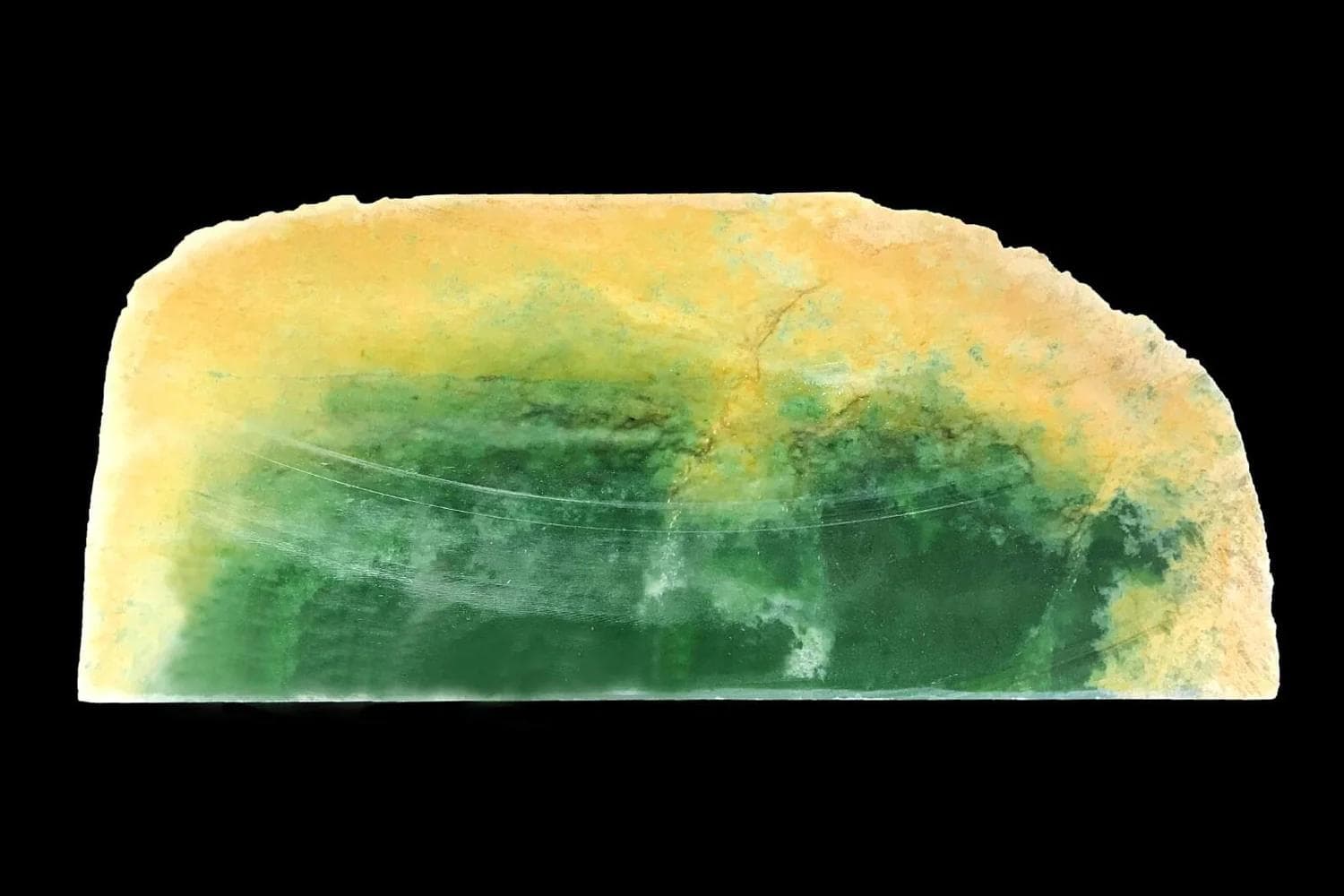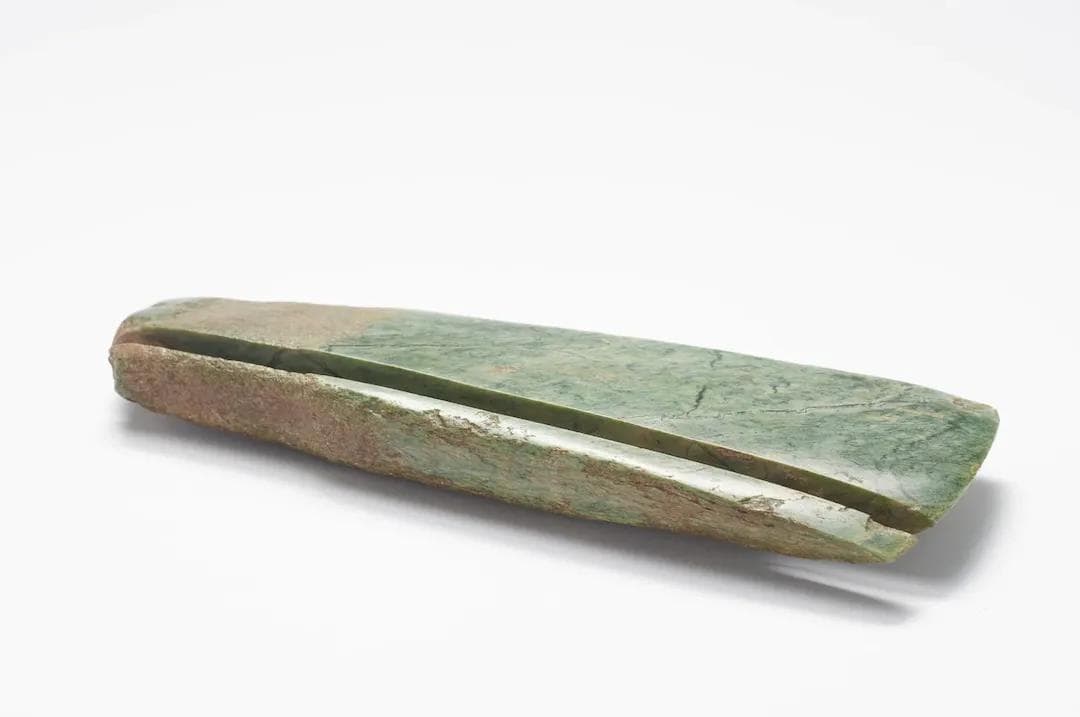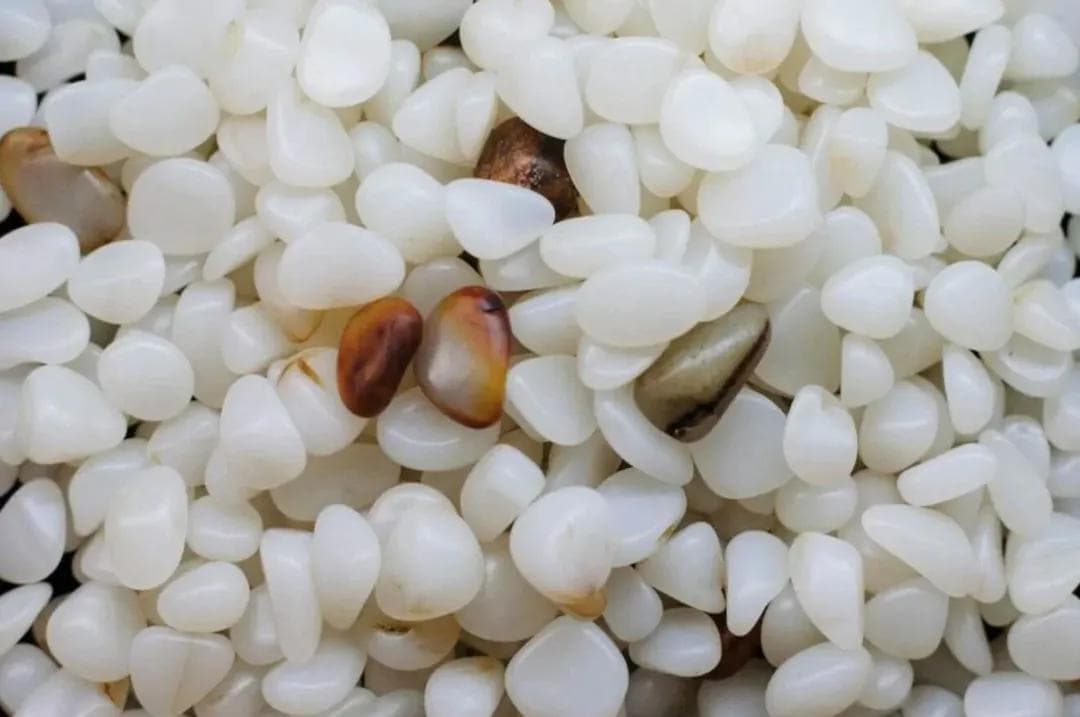
Nephrite jade is known by many names including jade, greenstone and pounamu. Geologists most commonly use the term nephrite jade, while Māori refer to their treasured stone as pounamu. New Zealand’s early European settlers called it greenstone - a name that is still used today and thought to have stood the test of time for its ease of remembrance. To everyone else, the stone is simply known as jade. You’ll find that we use all of these names interchangeably across our website and everything we carve is nephrite jade.

One day, as he rested in the northern seas of the Bay of Plenty, Poutini watched a beautiful young woman named Waitaiki come down to the water to bathe. Enchanted by her beauty, Poutini captured Waitaiki and fled south with his treasure - lighting fires along the way to keep her warm. Waitaiki’s husband, the powerful chief Tamaahua, soon discovered his loss and furiously paddled his canoe in pursuit of his love and her captor. He followed closely, and found precious stones amidst the remains of Poutini's fires.
The chase was relentless, and Poutini finally stopped on the West Coast of the South Island, hiding up the Arahura River. Not wanting to give her up, he knew the only way to keep Waitaiki for forever, was to turn her into his own essence. So Poutini transformed Waitaiki into pounamu and lay her in the river bed. He quietly escaped past Tamaahua, and is thought to have ever since swam up and down the West Coast guarding the land and its precious pounamu.

Science tells us the origin of pounamu starts with mother earth and that the stone is a metamorphic rock formed deep in the earths crust, under intense heat and pressure, 200-300 million years ago. As tectonic plate movement slowly forged the Southern Alps, uplifting stresses moved nephrite bearing lenses upwards to the surface of the mountains. Here the lenses were worn down by the elements, and jade was slowly exposed from its softer enclosing rocks. For much of the past two million years, the rising Southern Alps were buried under huge ice glaciers. As glacial movements occurred, pounamu was slowly forced down the valleys. Landslides, erosion and rivers also scattered fragments over wide areas. Pounamu today can be found on our mountains, in our rivers and in the sea.

Jade is found in many spectacular locations around the world and each country has its own unique and beautiful variation. We source our jade from the wilds of Canada, Siberia, Australia, America, China, Indonesia, Australia and our own back yard – New Zealand. The minerals that are present in the earth where the stone is formed give jade its colour and texture. Australia is famed for its black jade, Siberia for its pale green almost white stone, China for its vibrant green base with black speckled dots, and New Zealand for its unique flower jade with hues of yellow and gold.

We’ve made it our company mission to source out the best stones from every corner of the world, and learn as much as we can from the jade experts that we meet on our travels. Three generations of the Sheehan family, the founders of Mountain Jade, have been driven to achieve this mission which has so far been carried out over 35 years - and we now have one of the largest jade collections to show for it! You can learn more about the different types of jade we carve below.
New Zealand is one of the few countries in the world that does not mine for its jade, the stone is instead fossicked in riverbeds and glacial valleys. In the late 1990s, the New Zealand government vested ownership and guardianship of all pounamu to the South Island tribe of Ngāi Tahu. As kaitiaki (guardians), Ngāi Tahu ensures any raw pounamu is sustainably and ethically sourced to make sure our taonga (treasure) is safeguarded for future generations. This includes not just caring for the stone but also protecting and advocating for the rivers it comes from, the artists that shape it and the communities that surround it. Under their leadership, the Ngāi Tahu Authentic Pounamu Licensing Scheme was borne and we were the first New Zealand retailer to be registered. Being licensed grants us the ability to purchase raw stone certified as genuine New Zealand pounamu directly from Ngāi Tahu to carve in our studios.

Over millions of years, our jade has formed. It is rare and offers incredible variety in colour, pattern and texture, with each region tending to produce different variations. Pounamu is treasured deeply for its strength, beauty and connection to the Māori spiritual world. The deep spiritual connection Māori have with pounamu reflects how various stone types were named, with each pounamu type given an identity that corresponded to the world in which they lived. Stones were named after native birds, fish, plants, locations or legends.

Pounamu has long been regarded as a tapu (sacred) part of te ao Māori (the Māori world) and a natural taonga (treasure) under the protection of ngā atua (the gods). The stone’s strength is one of several reasons that early Māori valued pounamu even more so than gold, as it served well for tools and weapons. On the mohs hardness scale, which is a measure of mineral hardness, nephrite is a 6.5, with diamond, one of the worlds hardest minerals, being a 10. For early Māori, it was a lengthy process to carve pounamu as fragments of the tough stone would needed separated from the larger boulder by continuously rubbing an abrasive back and forth to create a grove which could be snapped - as seen below in the picture of the adze blade in production. Today, jade artists still painstakingly carve everything by hand, but the carving process is made easier with the use of diamond-tipped machines and tools that are used to cut through the tough stone.

Different cultures around the world have treasured jade for over eight thousand years, using it as tools, weapons, adornments, currency, ceremonial objects and medical cures. For centuries, it has been believed that wearing, using and even eating jade will bestow strength, wealth, good fortune, as well as support the body’s healing process. Some sufferers of kidney stones would grind up the stone and use it as a paste, while others would adorn their bodies with jade charms to protect their vital organs. Māori considered pounamu a gift from the earth and it was prized above all other possessions. The below images showcase some early Māori uses of pounamu from the Te Papa Taonga Māori Collection, dating 1500-1850.

In New Zealand, early Māori used pounamu as a woodcutting tool because of its ability to retain a very hard, sharp cutting edge. Māori were skilful woodworkers and their main tools were toki (adze) and whao (chisels), fashioned in a wide range of sizes for different woodworking tasks such as constructing whare (houses) and waka (canoes), as well as carving elaborate surface designs onto wood and bone to tell stories, share knowledge and preserve history.
A toki poutangata, as pictured here, was an adze worked from pounamu and lashed to an elaborately carved wooden handle, often adorned with the feathers of significant native birds. It was mainly used for ceremonial functions and was a symbol of chiefly authority - carried by a person of mana (prestige). Even though a toki poutangata was usually used for ceremonial functions, it could also be used as a weapon.

In New Zealand, early Māori used pounamu as a woodcutting tool because of its ability to retain a very hard, sharp cutting edge. Māori were skilful woodworkers and their main tools were toki (adze) and whao (chisels), fashioned in a wide range of sizes for different woodworking tasks such as constructing whare (houses) and waka (canoes), as well as carving elaborate surface designs onto wood and bone to tell stories, share knowledge and preserve history. A toki poutangata, as pictured here, was an adze worked from pounamu and lashed to an elaborately carved wooden handle, often adorned with the feathers of significant native birds. It was mainly used for ceremonial functions and was a symbol of chiefly authority - carried by a person of mana (prestige). Even though a toki poutangata was usually used for ceremonial functions, it could also be used as a weapon.

Māori men and women also adorned pounamu, suspending the stone on flax cord from the neck or pierced earlobe. The hei tiki was the most esteemed and highly prized, thought to represent the human form, or the first man in Māori legend. Māori believe that when pounamu is worn, a person’s mauri - their life force or essence – is transferred to the stone. Meaning, when this piece is passed on to future generations it is thought to still behold the mauri of previous owners, aiding in forming lasting connections with ancestors and bestowing strength and prosperity on the new wearer. The tradition of gifting pounamu stretches far back in Māori history, and today, pounamu necklaces are still commonly gifted between loved ones as taonga (treasures), and passed down to future generations.
There can be some confusion between the stones nephrite and jadeite, as the term jade is used to describe both minerals. Nephrite jade is typically green, and its rich colour cannot be altered or changed. Its fibres bend before breaking, making it a hard stone that is best worked with high-speed diamond cutting tools. Jadeite is a vastly different gemstome, slightly harder, and comes in a much wider variety of colours, including emerald green, white, blue, purple and red. Real jadeite is very rare and very expensive. However, many will produce fake jadeite, as its colour can be dyed or altered. Nephrite jade is the only type of jade found in New Zealand and it is what we use for all of our carvings.
